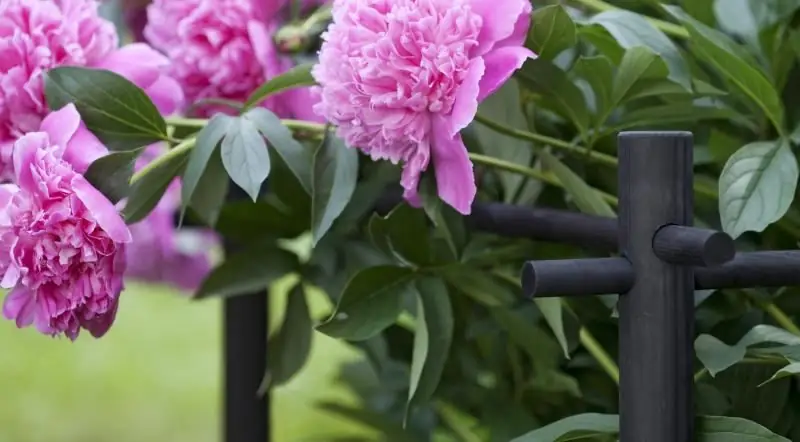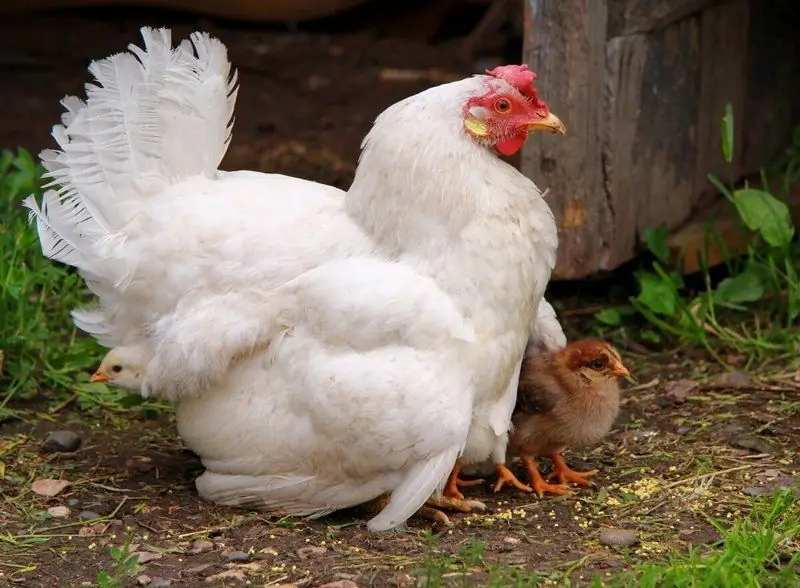
Table of contents:
- Author Bailey Albertson [email protected].
- Public 2023-12-17 12:53.
- Last modified 2025-06-01 07:32.
Not enough time to water often: how to keep the beds from drying out

If you can't devote much time to watering your garden, this does not mean that your vegetables will definitely die from drought. To save plantings, arrange for drip irrigation, mulch the beds, or use another method that will help you spend less time grooming and grow a good crop at the same time.
Organize drip irrigation
This type of irrigation allows moisture to be slowly delivered directly to the plant root system. You can organize drip irrigation using ordinary plastic bottles.
To get started, take a two-liter bottle, make a small puncture in it with a thin sewing needle (closer to the bottom of the container), dig into the garden bed and fill it with water. The liquid will slowly seep through the hole, gradually wetting the soil.
For every 20-30 cm of the garden bed, you need to dig in 1 bottle. If you use 5-liter containers (suitable for large vegetable crops), they can be added dropwise at a distance of 50 cm from each other.
Leave the weeds
When the ground is completely exposed, moisture evaporates much faster than usual. It is especially dangerous if hot and windy weather sets in. Therefore, do not leave your garden beds completely weed-free if you cannot water your vegetables frequently.
The main advantage of this method is that the weed protects not only the soil, but also cultivated plants from liquid loss. It will create additional shade, which will further slow down the process of evaporation of moisture from the stems and foliage of vegetables.
Mulch
Like weeds, mulch protects the soil from the sun's rays and wind, so moisture evaporates much more slowly. The mulching process is the distribution of hay, straw, freshly cut grass or other suitable material over the surface of the beds. The thicker the layer is, the better the moisture will be retained.
The minimum layer thickness is considered to be 1.5 cm, and the optimal one is 3-5 cm. Old mulch turns into an excellent natural fertilizer for the garden, so you will get a double benefit. To achieve the best effect, mulching must be combined with drip irrigation.
Loosen
In the process of irrigation, water creates a kind of “passages” in the ground, along which its remains can rise upward and evaporate. If you loosen the bed immediately after watering, the “passages” system will be destroyed and the liquid will remain in the ground. This is the easiest way to stop moisture loss.
Make a canopy

If you don't want to leave weeds or a layer of mulch in your beds, use a canopy. It will protect the soil from direct sunlight, due to which moisture will evaporate much more slowly. Such protection can be made from regular fabric or special shading mesh, which is sold in almost every gardening store.
Measure a piece of material to the size of the bed, then drive a few pegs into the ground and stretch a canopy between them. The optimum height for such protection is 50-100 cm.
If you are unable to water your garden regularly, choose any of these methods to help you maintain optimal soil moisture levels. Better yet, combine several different options, such as drip irrigation and mulching.
Recommended:
Fences For Garden Beds With Your Own Hands - How To Make A Fence For A Front Garden, Flower Garden Or Vegetable Garden, Step By Step Instructions With A Photo

Options for fences for a suburban area. Their pros and cons. How to install a holder for plastic bushes, a flower bed from bottles: step by step instructions. Video
What Can Be Planted In June In The Country: Plants For The Garden, Vegetable Garden And Flower Garden

Plants suitable for planting in the garden in June are greens, roots, other vegetables, flowers. What can be planted in open ground and in a greenhouse. Gardener's recommendations
Is It Possible To Keep Chickens In The Garden, What To Do If The Neighbors Brought Them

Is it possible to keep chickens on my site. What to do if neighbors violate chicken keeping rules
Why Drying Clothes In The Cold Is Better Than Using A Battery

Advantages of drying clothes in the winter outdoors over hanging clothes on batteries in an apartment
What You Need To Watch Out For In The New Year To Keep Your Pet Safe

How to keep your pet safe during New Year's Eve
